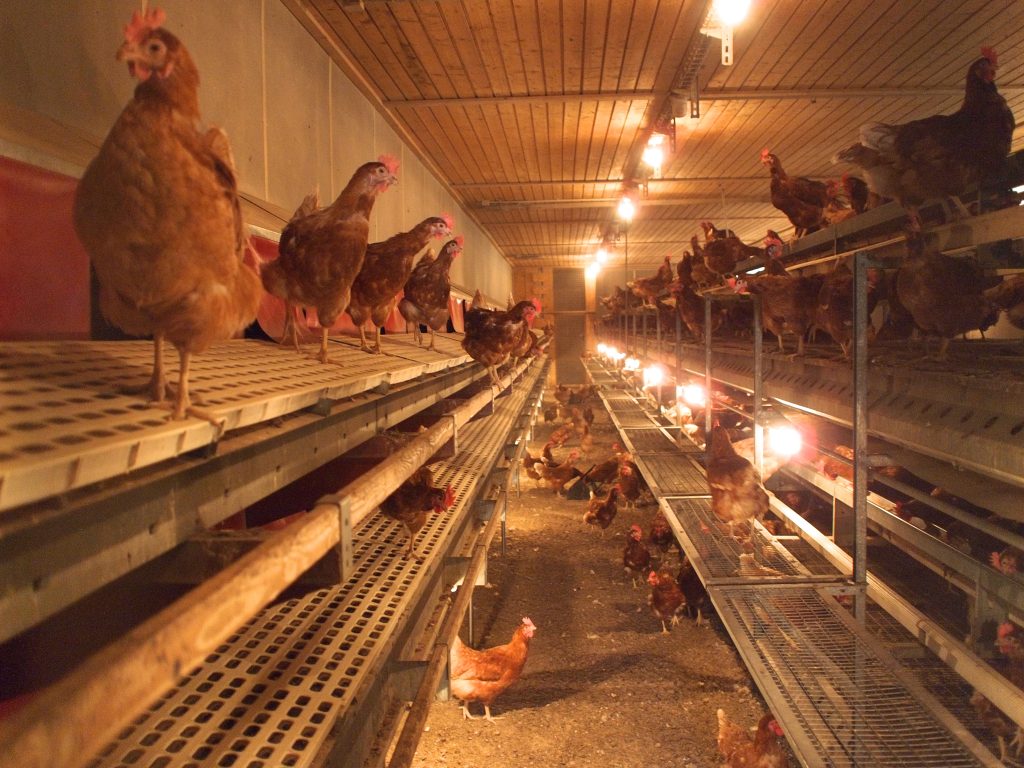Written by: Dr. Jacquie Jacob, University of Kentucky

Cage-free means that the hens are not kept in cages. It does not mean that they are allowed to go outside. They are free to roam inside the poultry house. You can buy cage-free or free-roaming eggs in the grocery store but they cost a lot more. This is because they are more expensive to produce. It is also important to make sure that the hens lay eggs in the nests. Eggs laid on the floors can be a food safety problem. Eggs from cage-free or caged hens are both safe and nutritious. People typically chose to use free-range or cage-free eggs because they feel that the hens that laid them are happier. Consumers are more willing to pay more for eggs produced from ‘happy’ chickens.
Cage-free or free-roaming does not mean that the chickens are able to go outside. This helps with temperature control inside the chicken house and helps to protect the chickens from wild animals. It also makes it easier to control diseases that can be spread between flocks. By keeping the chickens inside, they are also better able to control the temperature of the chicken house. They can also control the light so that the hens will lay year round.
Chickens in a cage-free system can be on the floor or be in an aviary system. In an aviary system, the chickens are free to move about the house and between different levels within the house. This allows for more hens per square foot of poultry house.

ADDITIONAL RESOURCES
How are eggs produced in the United States?

